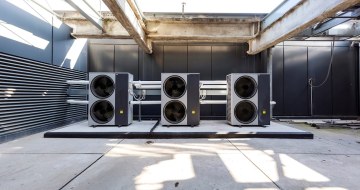
November 6, 2024 in Advisory Notes
Integrated Fire Mode Testing — Fundamental to Buildin...
Modern fire protection systems are now often integrated into other building systems and require a comprehensive testing approach to assure they will o...
October 5, 2018
1. Risk assessment of Legionella contamination, documented in a Risk Management Plan (RMP) – every five years (or more frequently if required)
2. Independent auditing of compliance with the RMP and Regulation – every year
3. Providing certificates of RMP completion and audit completion to the local government authority
4. Sampling and testing for Legionella and heterotrophic colony count – every month
5. Notifying reportable laboratory test results (Legionella count ≥1000 CFU/mL or heterotrophic colony count ≥5,000,000 CFU/mL) to the local government authority
6. Displaying unique identification numbers on all cooling towers.

The requirements for building occupiers to test for Legionella bacteria on a monthly basis and notify high ‘reportable test results’ to their local government authority commenced on January 1, 2018.
The Occupier is defined in the NSW Public Health Act 2010 as:
For each water-cooling system it is important that the Occupier be clearly identified and understand the new responsibilities.
The test sampling must be carried out by a Duly Qualified Person. This is a person who might reasonably be expected to be competent to install, operate or maintain a water-cooling system and can include people who work for water treatment companies, mechanical services companies, and other industry organisations that manage water-cooling systems on a day to day basis.
Samples must be tested by a laboratory accredited by the National Association of Testing Authorities (NATA). Test results can be provided to the Duly Qualified Person on behalf of the Occupier, to the Occupier, or the local government authority depending on contractual arrangements.
The Regulation requires the water-cooling system to be operated to ensure Legionella counts and HCC remain below threshold levels.
A Legionella count greater than 1000 CFU/mL and a HCC greater than 5,000,000 CFU/mL must be notified to the local government authority for that area within 24 hours.
The Regulation requires a Competent Person to undertake an effective risk assessment, to identify and document in a Risk Management Plan measures to limit the growth and transmission of Legionella bacteria. The assessment should:
The first risk assessments under the amended Regulation will be completed in phases. Local government authorities will allocate systems in their area to a due date of 30 November 2018, 31 March 2019, or 30 June 2019.
The Occupier must ensure that an audit is carried out by an Independent Auditor for each 12-month period, with no gaps between periods.
For further information go to the NSW Department of Health website.
For advice or assistance, please contact
Gary Whatling
Manager (NSW/ACT), A.G. Coombs Advisory
P: +61 3 9248 2700 | E. gwhatling@agcoombs.com.au

November 6, 2024 in Advisory Notes
Modern fire protection systems are now often integrated into other building systems and require a comprehensive testing approach to assure they will o...

August 8, 2024 in Advisory Notes
Over the past decade, automated data analytics have been seamlessly integrated into various facets of our daily lives, including the operation and mai...

June 24, 2024 in Advisory Notes
Mould plays an important role in the natural environment as a break-down mechanism for dead organic matter. In the built environment it is an unwanted...

April 30, 2024 in Advisory Notes
A lot has changed since A.G. Coombs released our first Advisory Note on heat pumps back in 2018. Increasingly, asset owners are no longer asking if he...